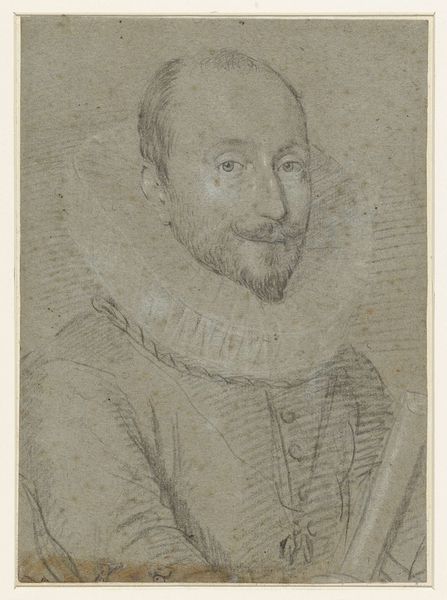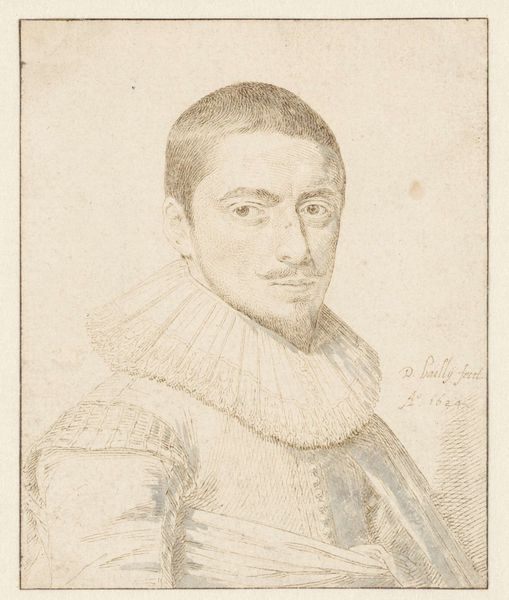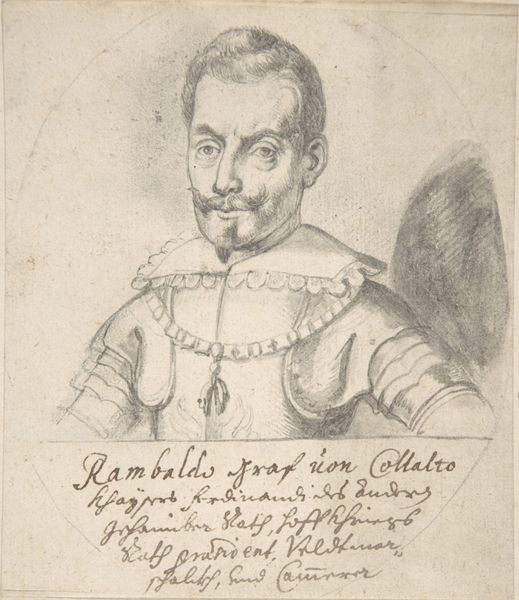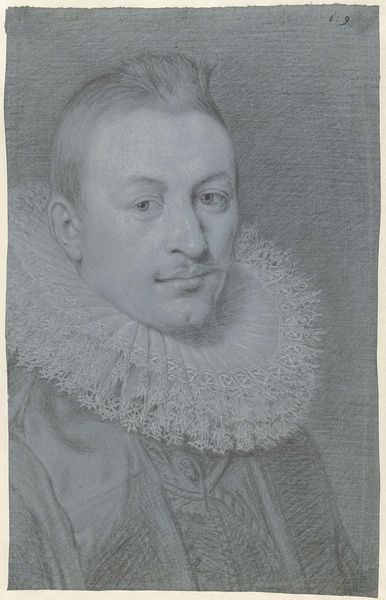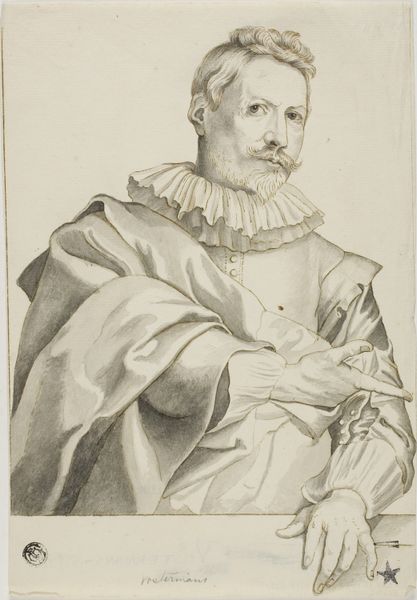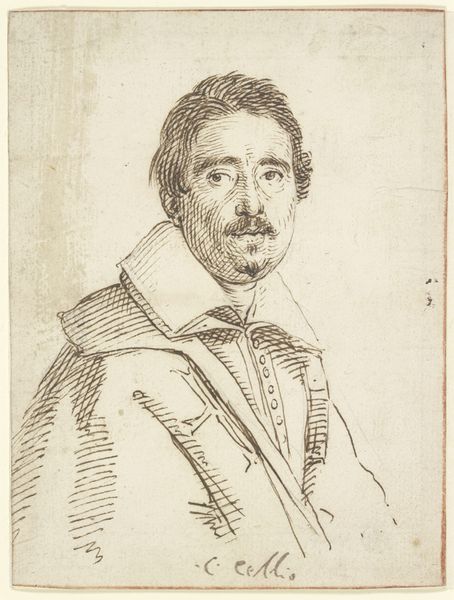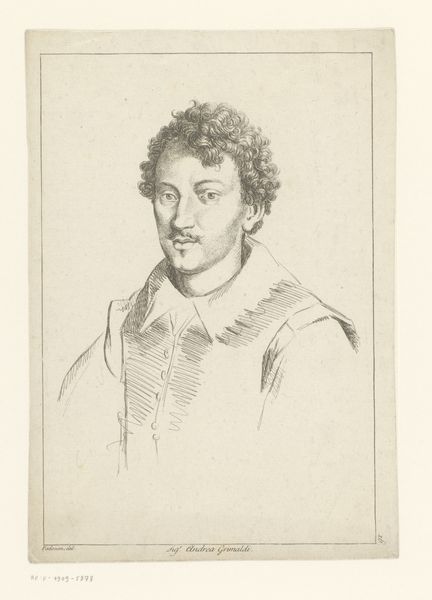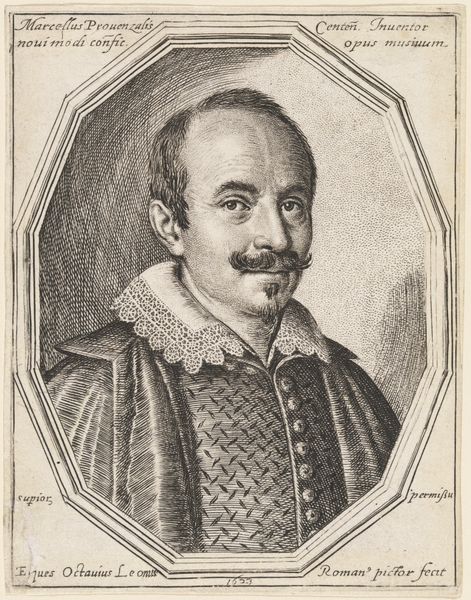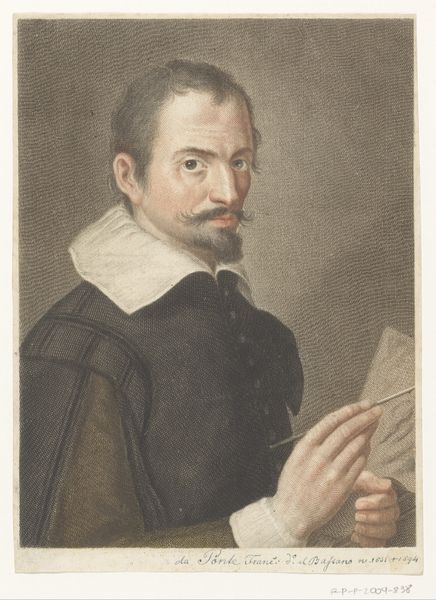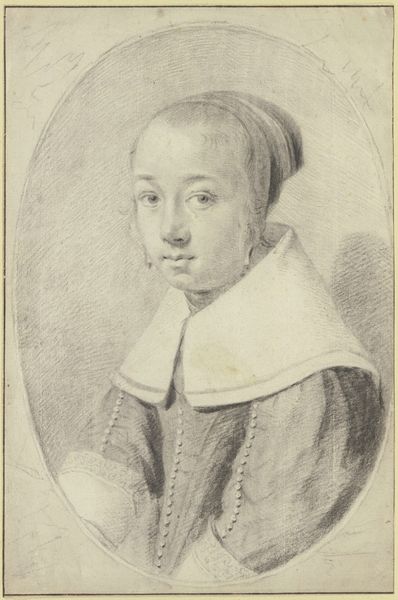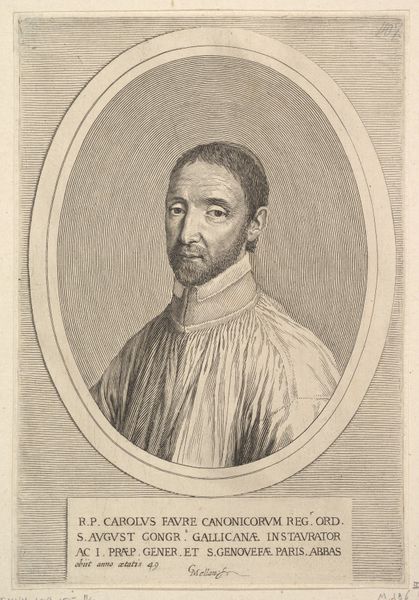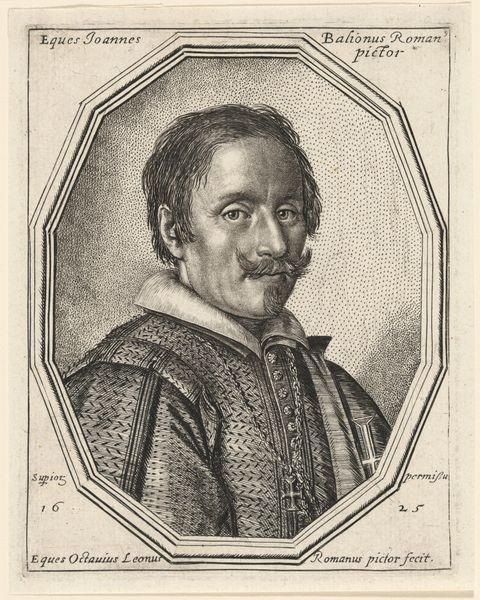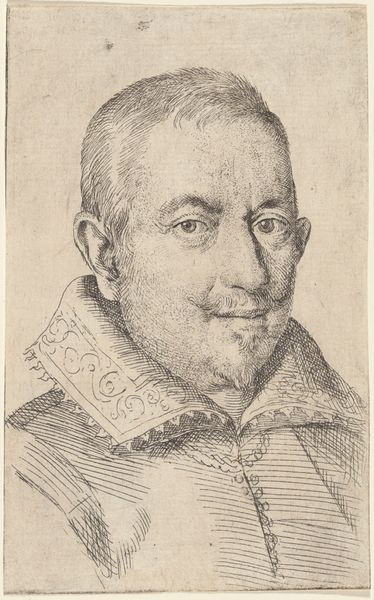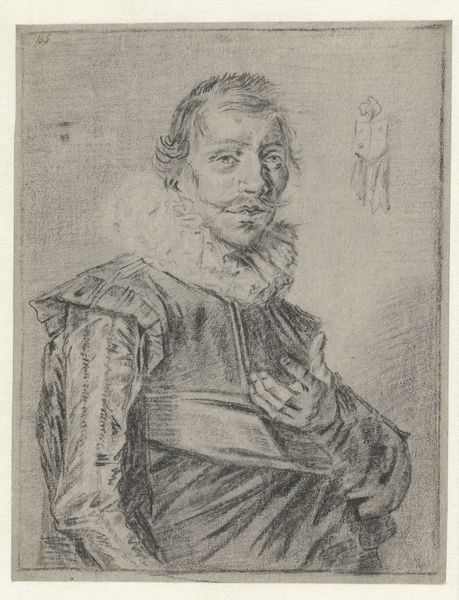
drawing, red-chalk, paper, chalk, graphite
#
portrait
#
drawing
#
baroque
#
red-chalk
#
charcoal drawing
#
paper
#
chalk
#
graphite
Copyright: Public Domain
Editor: We’re looking at "Bust of a Gentleman," a red-chalk drawing from 1622 by Ottavio Leoni. It's housed at the Städel Museum. I’m struck by the texture. The paper seems almost to absorb the chalk, creating a soft, almost ethereal quality. What catches your eye about it? Curator: The work’s formal strengths lie in its rendering of texture through subtle gradations of light and shadow, achieved masterfully with red chalk. Note how the artist employs hatching and stippling to define the volume of the figure, particularly around the ruff and face. Do you perceive how this creates an interesting tension? Editor: Yes, the ruff seems to be almost a separate entity from the gentleman! Is this use of light and shadow typical for Baroque portraiture? Curator: Indeed, Baroque art favors dynamic compositions and dramatic use of light, which we observe here in the modeling of the face and the stark contrast between the figure and the toned paper. However, consider the formal vocabulary. The artist is making a statement about status via costume, but also about the power of representation and artistic ability via its detailed features and realistic execution. Can you see it now? Editor: I think so! I’m noticing the meticulous detail in the rendering of his mustache, too. It gives a very strong character. Curator: Precisely. The sum total—color palette, texture, shading—constitutes an image that speaks not just to likeness, but to presence. This emphasis aligns perfectly within the Formalist project: attention to formal elements and techniques employed rather than on what those features represent. Editor: That's given me a fresh perspective! Now, I appreciate Leoni’s attention to composition and light. It’s definitely more than just a picture; it’s an exploration of form.
Comments
No comments
Be the first to comment and join the conversation on the ultimate creative platform.
